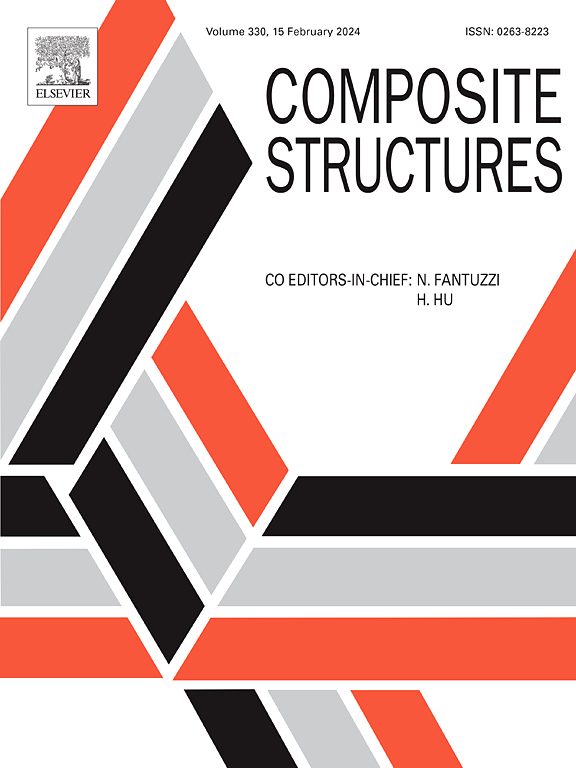Bending damage of novel UV-CGFR composites for pipeline rehabilitation: Experimental characterization and numerical simulation
IF 6.3
2区 材料科学
Q1 MATERIALS SCIENCE, COMPOSITES
引用次数: 0
Abstract
In this paper, a finite element numerical model of the bending damage of ultraviolet-cured glass fiber reinforced (UV-CGFR) composites was developed based on the results of the three-point bending test and X-ray tomography (Micro-CT), as well as infrared thermography (IRT) and other microscopic and macroscopic characterization tests. The numerical model, incorporating the three-dimensional Hashin failure criterion via the VUMAT subroutine, was established to predict the bending failure process and damage energy of UV-CGFR composites from the perspectives of fracture damage and energy dissipation. The effects of curing time, UV irradiation intensity, and loading rate on the bending properties and bending failure mechanism of UV-CGFR composites were systematically investigated. The primary failure modes observed were resin compression-tensile fractures, fiber tensile fractures, interlaminar debonding, and delamination. The bending strength and bending modulus of UV-CGFR composites increase and decrease with the increase of curing time and irradiation intensity; the bending strength increases with the loading rate, and the bending modulus is less affected by the loading rate. The temperature rise effect generated by fiber tensile fractures and interlaminar debonding was identified as a key factor contributing to the enhancement of bending strength. The temperature increase became more pronounced with higher loading rates, reaching a maximum rise of 5.2℃. Furthermore, the feasibility of UV-CGFR composites for pipeline repair was validated through pipe ring bending tests. The results show that the bending damage behaviour of UV-CGFR composites aligns well with real-world engineering applications, and the UV-CGFR composite lining repair significantly enhanced the pipeline’s load-bearing properties.
求助全文
约1分钟内获得全文
求助全文
来源期刊

Composite Structures
工程技术-材料科学:复合
CiteScore
12.00
自引率
12.70%
发文量
1246
审稿时长
78 days
期刊介绍:
The past few decades have seen outstanding advances in the use of composite materials in structural applications. There can be little doubt that, within engineering circles, composites have revolutionised traditional design concepts and made possible an unparalleled range of new and exciting possibilities as viable materials for construction. Composite Structures, an International Journal, disseminates knowledge between users, manufacturers, designers and researchers involved in structures or structural components manufactured using composite materials.
The journal publishes papers which contribute to knowledge in the use of composite materials in engineering structures. Papers deal with design, research and development studies, experimental investigations, theoretical analysis and fabrication techniques relevant to the application of composites in load-bearing components for assemblies, ranging from individual components such as plates and shells to complete composite structures.
 求助内容:
求助内容: 应助结果提醒方式:
应助结果提醒方式:


